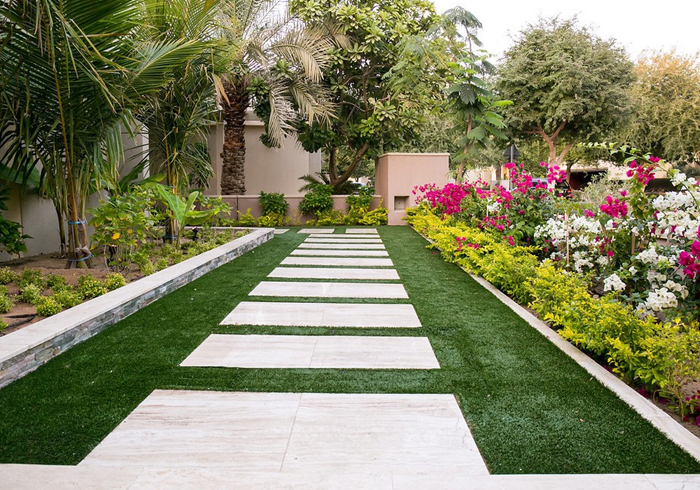Some Known Incorrect Statements About Landscape Design
Some Known Incorrect Statements About Landscape Design
Blog Article
Landscape Design - An Overview
Table of ContentsMore About Landscape DesignRumored Buzz on Landscape DesignThe Ultimate Guide To Landscape DesignThe Landscape Design PDFs
When designing a household landscape, one of the most vital action is to place an intend on paper. Developing a plan of attack will certainly save you money and time and is most likely to cause a successful design. A master plan is developed through the 'design process': a detailed approach that takes into consideration the ecological problems, your needs, and the components and concepts of style.The 5 steps of the design procedure consist of: 1) conducting a website supply and evaluation, 2) identifying your needs, 3) developing functional diagrams, 4) creating theoretical design strategies, and 5) drawing a last style strategy. The very first three actions establish the aesthetic, functional, and gardening demands for the layout. The last two steps after that apply those needs to the production of the final landscape plan.
This is a critical action for both plant choice and positioning and locating family tasks and functions. It is necessary because the very same climate problems that impact the plantstemperature, humidity, rainfall, wind, and sunlightalso affect you, the individual. The following action is to make a list of your demands and desiresthis assists you determine just how your yard and landscape will certainly be used.
The useful layout is then utilized to locate the activity areas on the website and from this layout a conceptual strategy is created. The last step is a final style that consists of all the hardscape and growing details that are essential for installation. Throughout the design procedure there are 10 important points to take into consideration: for plant selection and activity place by considering what you want and need to help determine shapes and organize rooms by designating activity locations and connecting with elements for both the setting and the user by utilizing massing and layering methods such as transition locations and centerpieces in the products, the colors, and the surface structures for the development and upkeep of plants by utilizing sustainable style methods An extensive supply and evaluation of the website is essential to establish the ecological problems for plant growth and the most effective use of the site.
Getting The Landscape Design To Work
The type of soil figures out the nutrients and wetness readily available to the plants. It is constantly best to utilize plants that will thrive in the existing soil. Soil can be modified, modification is typically expensive and many times inefficient. Existing plants can supply clues to the dirt kind. Where plants expand well, note the dirt conditions and use plants with comparable expanding requirements.

Sun/shade patterns, the amount and length of direct exposure to sun or color (Figure 1), develop microclimates (occasionally called microhabitats) - Landscape Design. Recording website conditions and existing plant life on a base map will reveal the area of microclimates in the lawn. Plants usually come under 1 or 2 of 4 microclimate categories-full sun, partial color, shade, and deep color
A Biased View of Landscape Design
Number 1. Sun and shade patterns. Credit Rating: Gail Hansen, UF/IFAS It is important to keep in mind all the status quo on an exact base map when doing the website inventory (Figure 2). Utilities such as high-voltage line, septic containers, underground energies and roof overhangs identify plant area. Make use of a property surveyor's plat of your home for the limits and area of your home.


Determine the time and money you are prepared to place into maintaining the plants and hardscape-be sensible about your purposes and capability. Proposed usage areas. Credit: Gail Hansen, UF/IFAS There are several different landscape layout motifs- from basic to complex, yet it is useful to choose one to guide your plant and material option.
Lots of people locate it practical to look in horticulture publications and books for concepts. This is a good begin, yet understand that the yards Discover More in the images were chosen due to the fact that they are impressive examples. Consider the pictures with a crucial eye to gather concepts that you can adjust to your enthusiasm level, your spending plan and your website.
Choose if you intend to open your yard, close your yard, or a little of both, to these views (Landscape Design). In various other words, do you desire the yard to confine the area around you and connect mostly to your house, or do you desire the yard to open he said sights and look outside, connecting to the environments? This will provide you a beginning indicate believe regarding a motif
Not known Details About Landscape Design
This is called "sense of location", which suggests it fits with the environments. There are both type themes and design motifs. Every yard needs to have a kind style, however not all gardens have a style motif. In reality, numerous household yards have no specific style other than to mix with the house by duplicating details from the architecture such as products, shade, and type.
In a kind theme the company and shape of the spaces in the lawn is based either on the form of the home, the form of the locations between your house and the residential or commercial property borders, or a preferred shape of the homeowner. The kind theme Discover More Here determines the form and organization (the format) of the rooms and the links between them.

Report this page